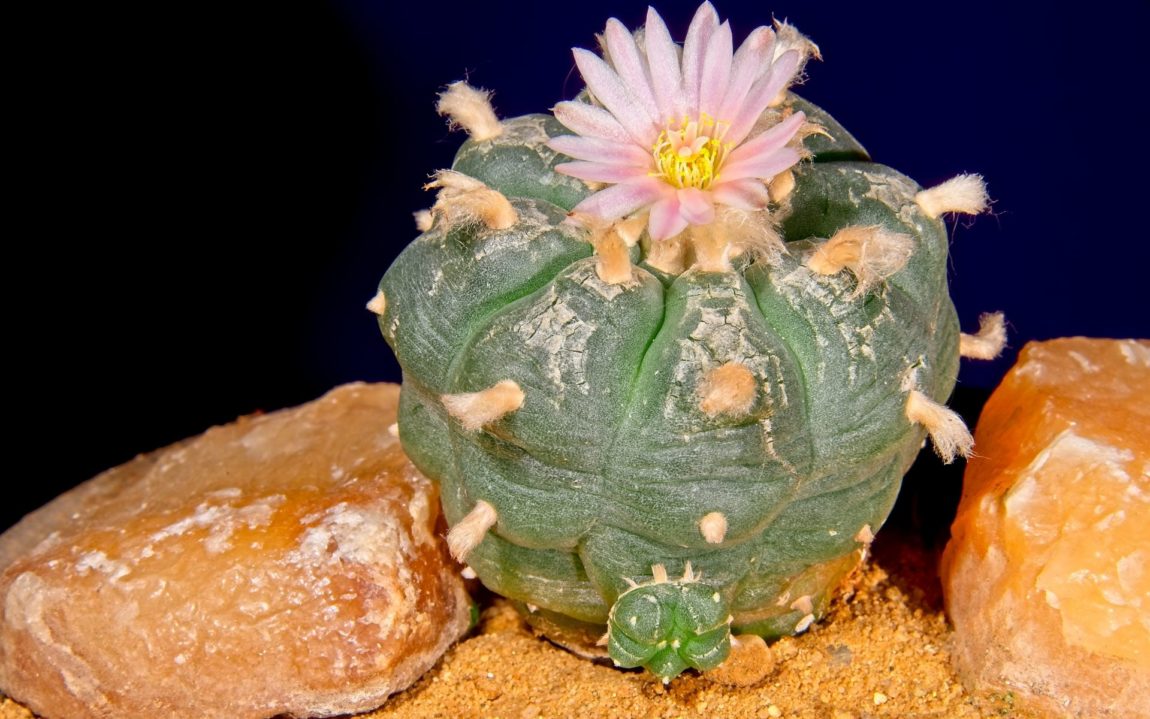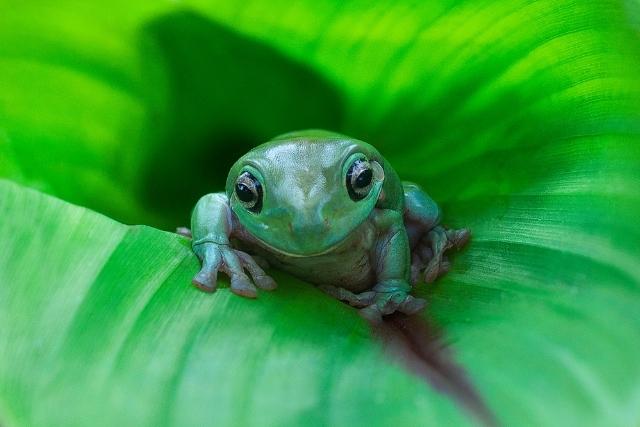Did you know that one of the oldest and most widely used psychedelics in the world comes from a cactus? If not, then let us introduce you to peyote.
Peyote is a small, round cactus native to specific regions in North America. However, it’s the mescaline inside the peyote cactus that causes a psychedelic trip.
For thousands of years, Indigenous tribes have used peyote for spiritual and healing purposes. However, peyote has caught the attention of many others seeking to heal or have a recreational experience with psychedelics.
Now you might be wondering—what exactly is peyote, how is it used, and what are its effects? Find out all that and more by reading below.
What Is Peyote?
Scientifically, peyote is a species of spineless cactus known as Lophophora williamsii. The cactus is a native of Northern Mexico and parts of South and West Texas.
This species has a distinct small, green, and rounded appearance that grows close to the ground. They appear as small “buttons” with white tufts of hair appearing out from them.
It’s these “peyote buttons” that are dried and consumed for a psychedelic trip. Mature peyote contains over 60 different alkaloids, with the primary psychedelic being mescaline.
However, the other alkaloids all have psychoactive properties of varying degrees.
The only problem with peyote is that they are incredibly slow-growing. It takes the cactus anywhere from 10-30 years to completely mature.
 What Is the History of Peyote Use?
What Is the History of Peyote Use?
There’s evidence that peyote use goes back as far as 5,700 years ago. No one knows who first began using peyote, but some believe it was either the Tarahumara or the Chichimec.
Both of these groups are indigenous people in Northern Mexico. Since then, the sacred use of peyote has spread to many different tribes and peoples—even extending beyond peyote’s natural boundaries.
Now, it’s believed that there are more than 40 nations of American Indians who use peyote for religious purposes. The largest group of which is the Native American Church (NAC).
With over 250,000 members, the NAC is allowed to use peyote thanks to the United States Indigenous Religious Freedom Act.
How Is Peyote Taken?
More often than not, peyote is eaten dried. After harvesting the peyote buttons, they will be left outside in the sun to dry for a few weeks.
After that, the peyote can be eaten whole or ground into a fine powder. This powder can be swallowed whole or mixed with fruit or chocolate.
However, peyote can also be ingested fresh or boiled into a tea. How the peyote is taken depends on who is preparing it.
After all, peyote is often used as part of a peyote ceremony. During a peyote ceremony, peyote is ingested at night in a house or tipi around a fire or altar.
Chanting, singing, praying, and drumming all take place during the ceremony, with some quiet time for reflection.
What Are the Effects of Peyote?
Once ingested, it takes about 30 minutes to an hour to begin feeling the effects of the mescaline. The first sign that something is happening is an increased heart rate, blood pressure, or body temperature.
Many people also feel some physiological discomfort like nausea, sweating, or chills. These symptoms can last for up to 2 hours before melting away into a calm and relaxed state.
2-4 hours after ingestion is the peak of the effects. One can expect profound alteration of perceptions of reality and self, hallucinations, and intensified emotions.
Many people compare the effects of peyote to that of LSD. However, many think peyote is more sensual and less hallucinatory than LSD.
The trip can last up to 12 hours, with the effects gradually wearing off after the peak.
What Are the Benefits of Peyote?
Like other psychedelics, the benefits of peyote are often psychological and spiritual. That’s because a peyote journey can offer people deep insights into themselves and the world around them.
Peyote reveals things hidden deep within ourselves and can help us confront them. We can reflect on ourselves and begin to make the choices and connections that matter.
On top of that, psychedelic experiences often trigger a mystical experience. These mystical experiences are spiritual in essence.
Through this spiritual experience, many people feel a deeper connection to the greater whole. That can lead to people feeling a greater sense of purpose or meaning.
That’s why tribes have perfected the peyote ceremony. It’s a way to connect with others in the tribe, experience something greater, and sit in deep reflection.
 Are There Any Risks from Peyote?
Are There Any Risks from Peyote?
In general, peyote is a safe substance, according to current research. That makes sense once you realize that the Native American Church holds countless peyote ceremonies year-round.
On top of that, it’s unknown if there’s even a lethal dose of the substance since it’s probably too difficult to take a dangerous amount.
One danger from a peyote trip is for people with heart conditions. Since a peyote trip can increase heart rate and blood pressure, it’s best to avoid the added stress.
Peyote is also dangerous in combination with monoamine oxidase inhibitors (MAOIs). If you’re taking MAOIs, then it’s best to steer clear of peyote.
Is Peyote Illegal?
Peyote is technically considered a Schedule I substance—meaning that it’s illegal to possess and use. However, we mentioned that the plant is legal for members of the Native American Church under the American Indian Religious Freedom Act.
So, does that mean that non-Indians aren’t allowed to use peyote legally? Not exactly, because the law states that it’s legal to use so long as it’s used in a “bona fide” religious ceremony or for serious research purposes.
Peyote Use Comes with Ethical Considerations
As we mentioned, peyote takes at least a decade to mature. Due to its slow growth and popularity, the plant has become overharvested.
Unsustainable harvesting practices, black market sellers, and prohibited cultivation has led to peyote becoming critically threatened. If these trends continue, we may see peyote go extinct in the wild.
Unfortunately, it’s not looking good because interest in plant medicine is exploding. However, we need to remember that the plant is culturally and historically sacred to hundreds of thousands of people across North America.
Perhaps it’s best to consider the ethics of peyote use before seeking it out. After all, we need to help these sacred plants survive and thrive for generations to come.





No Comments